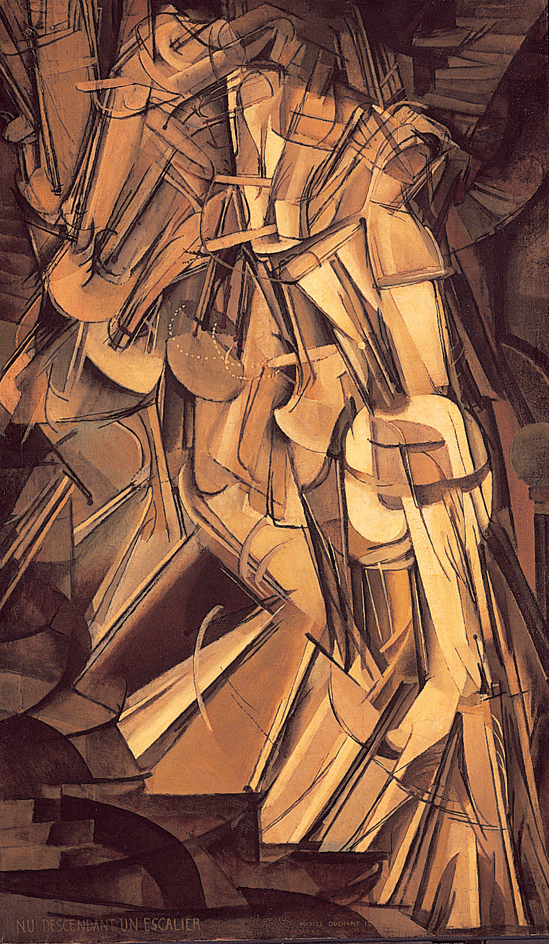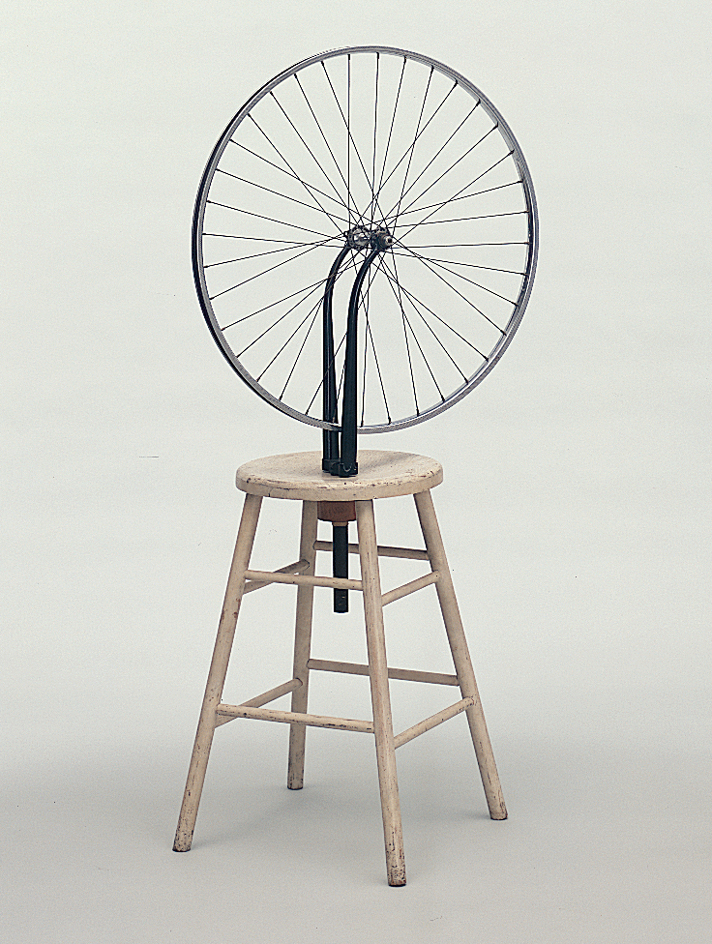Duchamp << doo SHAHN >>, Marcel (1887-1968), was a French-born artist and a leader of the modern movement in art. Duchamp created works that challenged the traditional definition of art. His unconventional approach helped to develop an atmosphere of creative freedom for other artists and has continued to be influential.
Duchamp’s best-known painting is Nude Descending a Staircase, No. 2 (1912). The depiction of the human figure as a sequence of planes shows the influence of a style called cubism that was developed about 1910 in France. This painting first shocked Duchamp’s older artistic colleagues in France in 1912. It caused an even greater sensation in 1913 when it was displayed at the New York Armory Show, the first large exhibition of modern art in the United States. The painting baffled and outraged many viewers, to whom it symbolized the unintelligibility of modern art.

Many of Duchamp’s works were simply everyday objects that he gave titles and exhibited as art. He called these works ready-mades. Duchamp’s most controversial ready-made was a common urinal that he titled Fountain and signed with the name “R. Mutt.” By wittily designating ordinary objects as works of art, he hoped to make people examine their own standards of art.

The most important and complex work of Duchamp’s career is the unfinished The Bride Stripped Bare by Her Bachelors, Even, sometimes known as the Large Glass. In this work of oil paint, wire, and lead foil enclosed in glass, Duchamp explored such themes as sexuality and the increasing mechanization of human life.
Duchamp was born on July 28, 1887, in Blainville, France, near Rouen. In 1904, he went to Paris, where he met artists who later led modern art movements. Duchamp shared many ideas with artists known as dadaists and surrealists, but he was not identified exclusively with any group. He settled in the United States in 1942. He died on Oct. 2, 1968.
See also Cubism; Dadaism; Surrealism.
